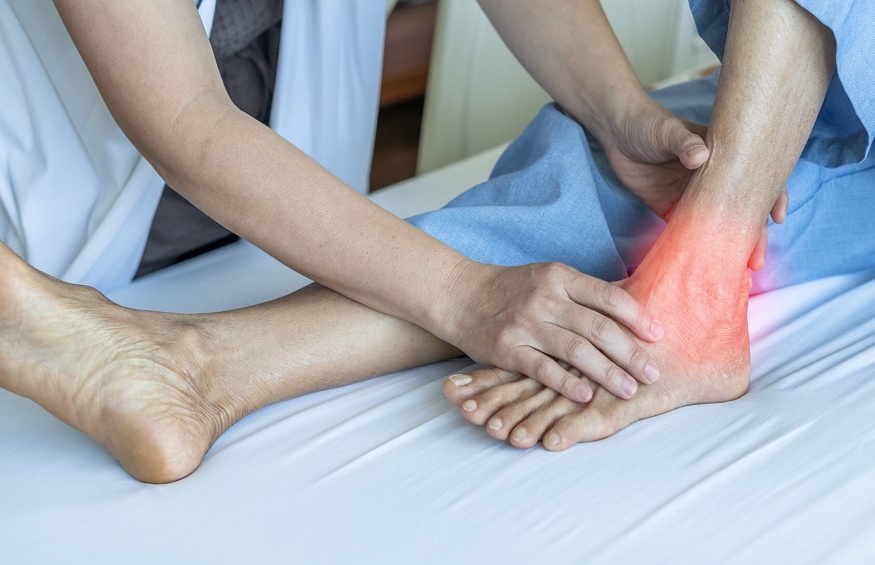Gout is a complex form of arthritis characterized by intense joint pain, inflammation, and swelling. It is caused by the buildup of uric acid crystals in the joints, leading to recurrent painful attacks. Understanding the causes, symptoms, and treatment for gout is essential for managing this condition effectively. In this blog post, we will delve into the intricacies of gout and provide valuable insights for individuals seeking information about its causes, symptoms, and available treatments.
Causes of Gout
Gout occurs when there is an excess of uric acid in the bloodstream, leading to the formation of urate crystals in the joints. The main causes of gout include:
- Diet: Consuming a diet high in purines, a natural substance found in certain foods, can contribute to increased uric acid production. Foods rich in purines include red meat, organ meats, seafood, sugary drinks, and alcohol.
- Genetics: Gout can have a hereditary component, with certain genetic factors predisposing individuals to higher uric acid levels and an increased risk of developing gout.
- Medical Conditions: Certain medical conditions, such as obesity, high blood pressure, diabetes, kidney disease, and metabolic syndrome, can increase the likelihood of developing gout.
Symptoms of Gout
Gout attacks typically occur suddenly and often affect the joint at the base of the big toe. However, gout can also affect other joints such as the ankles, knees, elbows, wrists, and fingers. Common symptoms of gout include:
- Intense Joint Pain: Gout causes sudden and severe joint pain, often described as throbbing, crushing, or excruciating. The pain is usually accompanied by swelling, redness, and warmth in the affected joint.
- Inflammation and Swelling: The affected joint becomes inflamed and swollen, making movement difficult and painful.
- Limited Range of Motion: Gout attacks can restrict the joint’s range of motion, causing stiffness and difficulty in performing everyday activities.
Treatment Options for Gout
- Medications: Nonsteroidal anti-inflammatory drugs (NSAIDs) are commonly used to reduce pain and inflammation during gout attacks. Colchicine, a medication specifically designed to treat gout, can also be prescribed. In some cases, corticosteroids may be used to relieve severe symptoms.
- Lifestyle Modifications: Making certain lifestyle changes can help manage gout and reduce the frequency and severity of attacks. These may include:
– Dietary Modifications: Limiting the intake of purine-rich foods and avoiding alcohol, particularly beer, can help decrease uric acid levels.
– Weight Management: Maintaining a healthy weight can help reduce the risk of gout and manage symptoms.
– Hydration: Drinking an adequate amount of water can help flush out uric acid from the body.
– Exercise: Regular physical activity can help control weight, improve joint flexibility, and lower uric acid levels.
- Medications to Lower Uric Acid Levels: In cases of chronic or recurrent gout, medications may be prescribed to lower uric acid levels. These medications, such as xanthine oxidase inhibitors (allopurinol, febuxostat), help prevent the production of uric acid or increase its elimination from the body.
- Avoiding Triggers: Identifying and avoiding triggers that can lead to gout attacks, such as certain foods, alcohol, and dehydration, can help prevent flare-ups.
Gout is a painful form of arthritis that can significantly impact an individual’s quality of life. Understanding the causes, recognizing the symptoms, and implementing appropriate treatment strategies are essential for managing this condition effectively. By making lifestyle modifications, taking medications prescribed by health care professionals, and following preventive measures, individuals with gout can reduce the frequency and severity of attacks, alleviate pain, and improve overall joint health. If you suspect you may have gout or experience recurrent joint pain, consult with a healthcare professional for an accurate diagnosis and personalized treatment plan.













+ There are no comments
Add yours